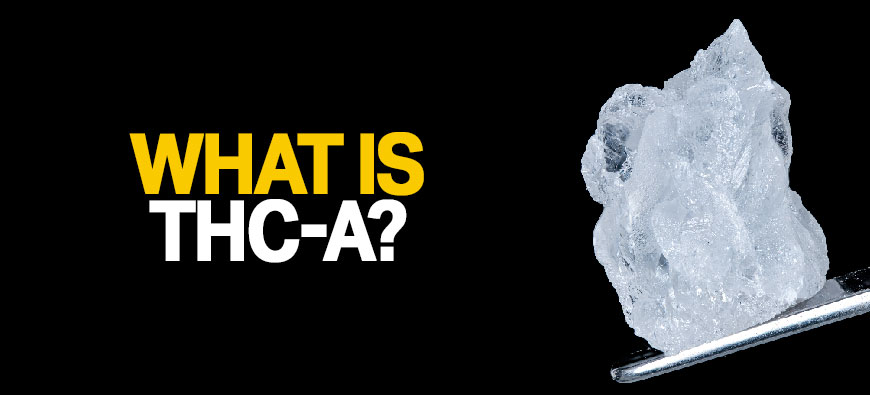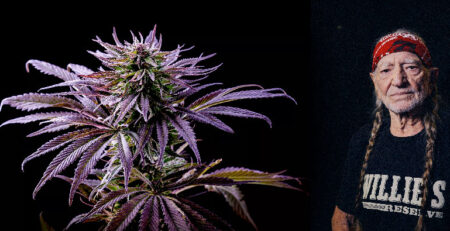THC-A: The Raw and Potent Cannabis Compound
Introduction: When we think of the effects of cannabis, THC (tetrahydrocannabinol) is often the first compound that comes to mind. However, THC-A (tetrahydrocannabinolic acid) is the raw and non-psychoactive form of THC found in fresh cannabis plants. THC-A must undergo decarboxylation, a process that converts it to THC, to produce the psychoactive effects commonly associated with cannabis consumption. In this blog post, we will explore what THC-A is, how it differs from THC, and the potential health benefits and effects of this raw cannabis compound.
What is THC-A? THC-A is a naturally occurring compound found in cannabis plants, particularly in the trichomes or resin glands of the plant. THC-A is the acidic precursor to THC, meaning that it must undergo decarboxylation, a process that involves heat and time, to convert into THC. When cannabis is consumed in its raw form, THC-A is the primary cannabinoid present, with only trace amounts of THC.
Differences between THC and THC-A: THC and THC-A are chemically similar but have different effects on the body. THC is psychoactive and produces the well-known “high” associated with cannabis consumption, while THC-A is non-psychoactive and does not produce any noticeable intoxicating effects. THC binds to the CB1 receptors in the brain, whereas THC-A does not. THC-A also has a higher melting point than THC, which can impact the extraction and consumption of the compound.
Potential health benefits and effects: While research on THC-A is limited, some studies suggest that it may have potential health benefits. THC-A has been found to have anti-inflammatory and neuroprotective properties, which could make it a promising treatment for conditions such as Alzheimer’s, Parkinson’s, and multiple sclerosis. THC-A may also have analgesic properties, which could make it effective in managing pain. Additionally, some people use raw cannabis or cannabis juice as a dietary supplement to promote overall health and well-being.
Conclusion: THC-A is a non-psychoactive compound found in raw cannabis that must undergo decarboxylation to convert into THC. While THC is the compound most commonly associated with the psychoactive effects of cannabis, THC-A may have potential health benefits such as anti-inflammatory, neuroprotective, and analgesic properties. More research is needed to fully understand the effects and potential uses of THC-A, but it is clear that this raw cannabis compound has significant therapeutic potential.
References:
- Aizpurua-Olaizola, Oier, et al. “Evolution of the Cannabinoid and Terpene Content during the Growth of Cannabis sativa Plants from Different Chemotypes.” Journal of Natural Products, vol. 79, no. 2, 2016, pp. 324-331.
- McPartland, John M., and Ethan B. Russo. “Cannabis and Cannabis Extracts: Greater Than the Sum of Their Parts?” Journal of Cannabis Therapeutics, vol. 1, no. 3-4, 2001, pp. 103-132.
- Russo, Ethan B. “Taming THC: Potential Cannabis Synergy and Phytocannabinoid-Terpenoid Entourage Effects.” British Journal of Pharmacology, vol. 163, no. 7, 2011, pp. 1344-1364
- Takeda, Shuso, et al. “Cannabidiolic Acid as a Selective Cyclooxygenase-2 Inhibitory Component in Cannabis.” Drug Metabolism and Disposition, vol. 36, no. 9, 2008, pp. 1917-1921.
- Wang, Mei, et al. “Neuroprotective Effect of Tetrahydrocannabinolic Acid against MPP+-Induced Neurotoxicity.” Journal of Toxicological Sciences, vol. 42, no. 6, 2017, pp. 701-711.
- Zurier, Robert B., et al. “Cannabinoids, Inflammation, and Fibrosis.” The FASEB Journal, vol. 30, no. 11, 2016, pp. 3682-3689.
- Morales, Paula, et al. “Cannabis Use in Patients with Fibromyalgia: Effect on Symptoms Relief and Health-



